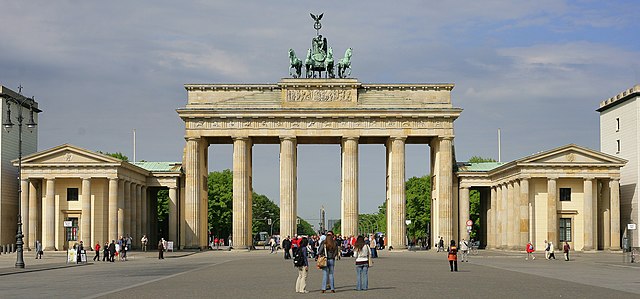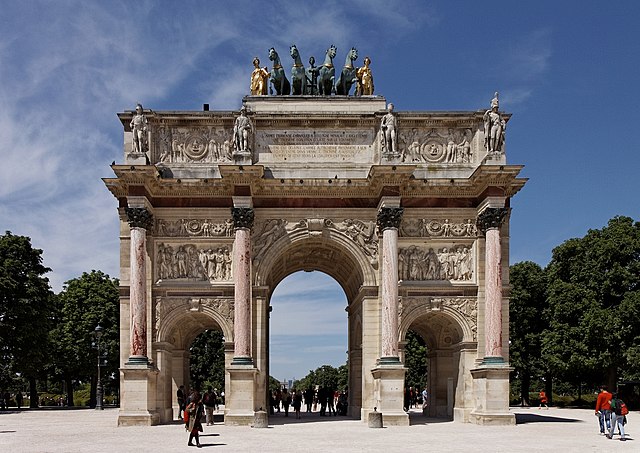Karl Friedrich Schinkel was a Prussian architect, city planner and painter who also designed furniture and stage sets. Schinkel was one of the most prominent architects of Germany and designed both Neoclassical and neo-Gothic buildings. His most famous buildings are found in and around Berlin.
Schinkel in 1836: by Carl Joseph Begas
A stamp with Schinkel's Altes Museum
Castle by the River (Schloß am Strom), 1820
Gotische Kirche auf einem Felsen am Meer, 1815
Neoclassical architecture
Neoclassical architecture, sometimes referred to as Classical Revival architecture, is an architectural style produced by the Neoclassical movement that began in the mid-18th century in Italy, France and Germany. It became one of the most prominent architectural styles in the Western world. The prevailing styles of architecture in most of Europe for the previous two centuries, Renaissance architecture and Baroque architecture, already represented partial revivals of the Classical architecture of ancient Rome and ancient Greek architecture, but the Neoclassical movement aimed to strip away the excesses of Late Baroque and return to a purer, more complete, and more authentic classical style, adapted to modern purposes.
Image: West facade of Petit Trianon 002
Image: Berlin Brandenburg Gate overwiev
Image: Paris Jardin des Tuileries Arc de Triomphe du Carrousel PA00085992 003
The Basilica Palladiana at Vicenza in Veneto, Italy








